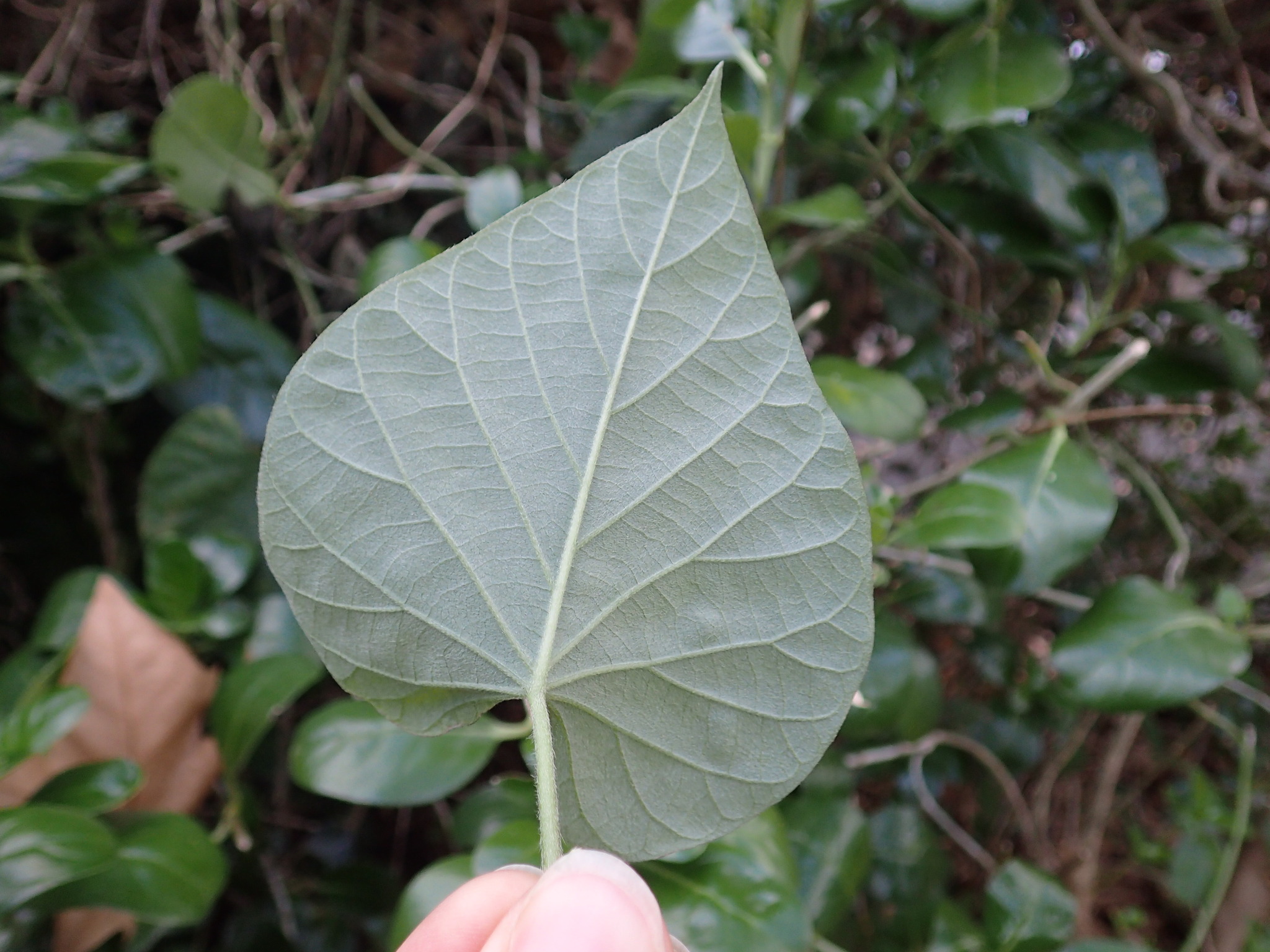
Perennial herb with twining stems. Leaves roundish, entire to deeply 3-lobed, to about 15 cm long and wide. Flowers terminal, in clusters of 2-many with conspicuous bracts. Corolla funnel-shaped, 6-7 cm long, violet-blue with paler mid-line bands and a darker throat; spring to autumn. Fruit capsule about 1 cm long, with 3 chambers. [I. acuminata (Vahl) Roem. & Schult., I. congesta R. Br., I. learii Paxt.]
Tropics
This is probably the most widely cultivated species and is fast growing, often smothering the structures it envelopes; it has become naturalised in SA, Qld, NSW and Vic but is most prolific in coastal tropical and subtropical regions. Other naturalised garden escapes include: the white-flowered I. alba and Common Morning Glory, I. purpurea, also called Blue Morning Glory, which differs from I. indica in having sepals less than 1.5 cm long and 1-few flowers per cluster; and I. batatas, grown for its edible tubers,which sometimes persists around old gardens and rubbish tips. Several other species are grown in warmer climates.
Source: (2002). Convolvulaceae. In: . Horticultural Flora of South-eastern Australia. Volume 4. Flowering plants. Dicotyledons. Part 3. The identification of garden and cultivated plants. University of New South Wales Press.
